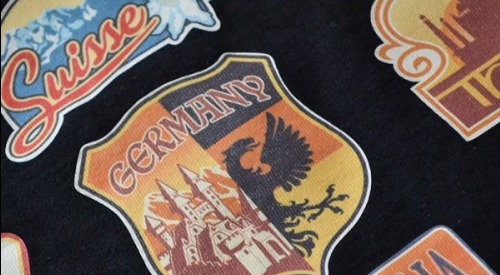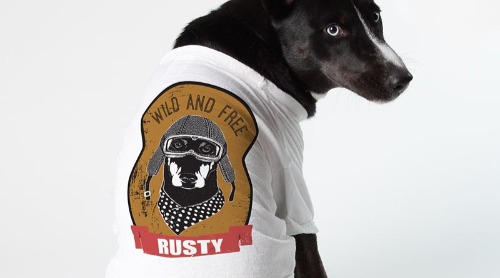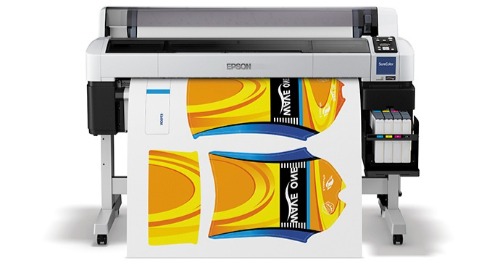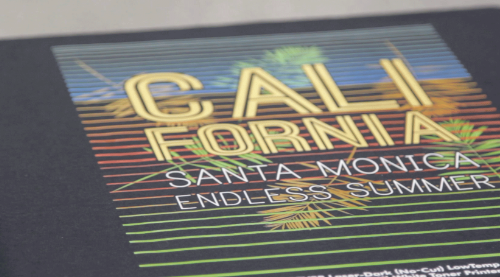With What and How Should You Be Creating Custom T-Shirts?
 There are a lot of ways to make a custom t-shirt and the best way for you and your business will vary based on the following factors
There are a lot of ways to make a custom t-shirt and the best way for you and your business will vary based on the following factors- How many t-shirts do you make a month?
- What kind of garments do you plan on making?
- How much space do you have?
- How much time do you have?
- How much can you afford?
Deciding on what piece of equipment will work for your business can be a daunting decision. There are many options and many different pieces of equipment. The best way to figure out what will work best for you is to look at what your customers request the most and determine which piece of equipment will give you that result. Does your customer want cotton or polyester, full color vs. one or two colors, two shirts or two hundred shirts? We will discuss a few of the popular options to make a t-shirt and compare it to the OKI Pro8432Wt Digital Transfer Printer.
The most popular ways to make a custom t-shirt are as follows:
- Heat Transfer Vinyl
- Direct to Garment
- Screen Printing
- Dye Sublimation
- Digital Transfer Printing
1. Heat Transfer Vinyl
Heat transfer vinyl (HTV) has the lowest startup cost for making a custom t-shirt. You can purchase rolls of heat transfer vinyl at a low low-cost and a Graphtec CE LITE-50 20-inch vinyl cutter for under $1000 ($899 MSRP). A small heat press like the Geo Knight JP 14 can be yours for under $500. HTV generally carries a low-cost.

2. Direct to Garment
Direct to garment or a DTG printer allows you to print ink directly onto the material. This process will give you the softest feel for a full-color shirt, however, it is not without its limitations.
Direct to garment shirts must all be pre-treated before they can be printed on. You either need a separate station in your shop to do this or you need to buy them pre-treated which increases your garment price. Also, DTG printers can only print on 50% cotton or higher garments. This means you cannot print onto polyester or certain polyblend t-shirts. Next, these printers need to run every day. If you have a DTG with white ink and do not run it daily, the white ink can clog up your print heads causing a major headache. Lastly, a DTG printer would be the most expensive piece of equipment to get you started. If you are making a lot of full color t-shirts daily and can run the printer Sunday-Saturday, the DTG will be a great option for you. However, if you do not want to deal with the headache of the upkeep on a DTG, there are other options that require less usage and have less maintenance.
 3. Screen Printing
3. Screen PrintingScreen printing is the oldest way of making t-shirts. This is done through the process of making individual screens for each color and then pressing ink through those screens onto the garment. This option will give you the lowest cost for high quantity and low color shirts. The startup cost is minimal if you only want to do a few colors manually.
This process is great for high quantity orders with only a few colors. Almost everything else would be better suited for a different machine. The main issue with screen printing is the setup time. Screens need to be prepared for each color on every design. This can be a timely and expensive process, which is why small orders are not economical. The other main issue is how much space it takes up. The equipment itself is large and the screens need to be stored and washed. If you burn your own screens, you will also need a dark room.
For large runs, screen printing can make you a profit, but for shorter runs, another option may be beneficial.
 4. Dye Sublimation Printing
4. Dye Sublimation PrintingAnother option for making custom garments is dye sublimation. This process takes a digital print and heats it directly into the garment. Once this ink is hit with enough heat, it will turn from a liquid into a gas and fuse into the shirt. The pro of this method is that the design is fused into the shirt. It has the softest feel and will give you great color. It can also be placed on other surfaces that are specifically coated for dye sublimation.
The negative to this process is how limited it is in what you can apply it to. In terms of garments, it only works on polyester. This means anything made of cotton or a cotton blend cannot be done. The same can be said for the other hard surfaces that this machine works on. A surface can only be used if it has been specially poly coated to work with dye sublimation. An example is a ceramic mug, which may cost between $1-$1.75 normally, versus a mug for dye sublimation which can cost between $2-$2.50.
The last negative to dye sublimation is that it is not ideal for long runs. Because of the heat required and the amount of time in a heat press, it is not great for big orders. This process on polyester gives you a soft feel and great color making it the perfect application for those shirts. However, if your customers are wanting other options other than polyester, you may need to look at another option.
 5. Digital Transfer Printing
5. Digital Transfer PrintingDigital Transfer Printing is done using a white toner laser printer to print digital transfers. This process can be done with the OKI Pro8432WT. The system has many advantages.
- You can print on any garment (cotton, poly, or blended garments)
- You can print full color every time with no addition cost
- NO WEEDING
- No maintenance
- Small footprint (size of a desktop laser printer)
Using the OKI Pro8432WT is not as quick as screen printing, however, there is no setup time, no color limitation, no screens to burn, no cleanup, and no maintenance. While it may not be the fastest option, it makes up for it with the number of options you have—the designs are endless! This system is a good option for starting a t-shirt business or a good addition to one of the previous mentioned ways of making t-shirts.
If you have any questions about the OKI Pro8432WT or any of the previous mentioned products, please contact us here or call our main line at 800.253.1569


